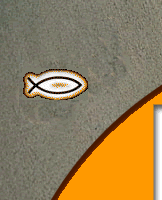| Note:
Some Links may be out of date.
By
Claude C. Hopkins
Chapter
5 - Headlines - How to create a good headline.
The difference between advertising and personal salesmanship
lies largely in personal contact. The salesman is there
to demand attention. He cannot be ignored. The advertisement
can be ignored. But the salesman wastes much of his
time on prospects whom he can never hope to interest.
He cannot pick them out. The advertisement is read only
by interested people who, by their own volition, study
what we have to say. The purpose of a headline is to
pick out people you can interest. You wish to talk to
someone in a crowd. So the first thing you say is, "Hey
there, Bill Jones" to get the right persons attention.
So it is in an advertisement. What you have will interest
certain people only, and for certain reasons. You care
only for those people. Then create a headline which
will hail those people only.
Perhaps
a blind headline or some clever conceit will attract
many times as many. But they may consist of mostly impossible
subjects for what you have to offer. And the people
you are after may never realize that the ad refers to
something they may want.
Headlines
on ads are like headlines on news items. Nobody reads
a whole newspaper. One is interested in financial news,
one in political, one in society, one in cookery, one
in sports, etc. There are whole pages in any newspaper
which we may never scan at all. Yet other people might
turn directly to those pages. We pick out what we wish
to read by headlines, and we don't want those headlines
misleading. The writing of headlines is one of the greatest
journalistic arts. They either conceal or reveal an
interest.
Suppose
a newspaper article stated that a certain woman was
the most beautiful in the city. That article would be
of intense interest to that woman and her friends. But
neither she nor her friends would ever read it if the
headline was "Egyptian Psychology." So in
advertising. It is commonly said that people do not
read advertisements. That is silly, of course. We who
spend millions in advertising and watch the returns
marvel at the readers we get. Again and again we see
20 percent of all the readers of a newspaper cut out
a certain coupon. But people do not read ads for amusement.
They don't read ads which, at a glance, seem to offer
nothing interesting. A double-page ad on women's dresses
will not gain a glance from a man. Nor will a shaving
cream ad from a woman.
Always
bear these facts in mind. People are hurried. The average
person worth cultivating has too much to read. They
skip three-fourths of the reading matter which they
pay to get. They are not going to read your business
talk unless you make it worth their while and let the
headline show it.
People
will not be bored in print. They may listen politely
at a dinner table to boasts and personalities, life
history, etc. But in print they choose their own companions,
their own subjects. They want to be amused or benefited.
They want economy, beauty, labor savings, good things
to eat and wear. There may be products which interest
them more than anything else in the magazine. But they
will never know it unless the headline or picture tells
them.
The
writer of this chapter spends far more time on headlines
than on writing. He often spends hours on a single headline.
Often scores of headlines are discarded before the right
one is selected. For the entire return from an ad depends
on attracting the right sort of readers. The best of
salesmanship has no chance whatever unless we get a
hearing. The vast difference in headlines is shown by
keyed returns which this book advocates. The identical
ad run with various headlines differs tremendously in
its returns. It is not uncommon for a change in headlines
to multiply returns from five or ten times over.
So
we compare
headlines until we know what sort of appeal pays best.
That differs in every line, of course. The writer has
before him keyed returns on nearly two thousand headlines
used on a single product. The story in these ads are
nearly identical. But the returns vary enormously, due
to the headlines. So with every keyed return in our
record appears the headlines that we used. Thus we learn
what type of headline has the most widespread appeal.
The product has many uses. It fosters beauty. It prevents
disease. It aides daintiness and cleanliness. We learn
to exactness which quality most of our readers seek.
This does not mean we neglect the others. One sort of
appeal may bring half the returns of another, yet be
important enough to be profitable. We overlook no field
that pays. But we know what proportion of our ads should,
in the headline, attract any certain class.
For
this same reason we employ a vast variety of ads. If
we are using twenty magazines we may use twenty separate
ads. This because circulation's overlap, and because
a considerable percentage of people are attracted by
each of several forms of approach. We wish to reach
them all.
On
a soap, for instance, the headline "Keep Clean"
might attract a very small percentage. It is to commonplace.
So might the headline, "No animal fat." People
may not care much about that. The headline, "It
floats" might prove interesting. But a headline
referring to beauty or complexion might attract many
times as many. An automobile ad might refer in the headline
to a good universal joint. It might fall flat, because
so few buyers think of universal joints. The same ad
with a headline, "The Sportiest of Sport Bodies,"
might out pull the other fifty to one.
This
is enough to suggest the importance of headlines. Anyone
who keys ads will be amazed at the difference. The appeals
we like best will rarely prove best, because we do not
know enough people to average up their desires. So we
learn on each line by experiment.
But
back of all lie fixed principles. You are presenting
an ad to millions. Among them is a percentage, small
or large, whom you hope to interest. Go after that percentage
and try to strike the chord that responds. If you are
advertising corsets, men and children don't interest
you. If you are advertising cigars, you have no use
for non-smokers. Razors won't attract women, rouge will
not interest men.
Don't
think that those millions will read your ads to find
out if your product interests. They will decide at a
glance - by your headline or your pictures. Address
the people you seek, and them only.
Since
this lesson has been a bit longer than expected we will
have an extra search engine to go over for the next
couple of months. Please let us know if you have any
comments, questions or suggestions....after all we are
a work in progress.
In
lesson Four we will be talking about Testing. Which
is a big key to your advertising success.
Click
here to read more of the Scientifc Advertising

|
















